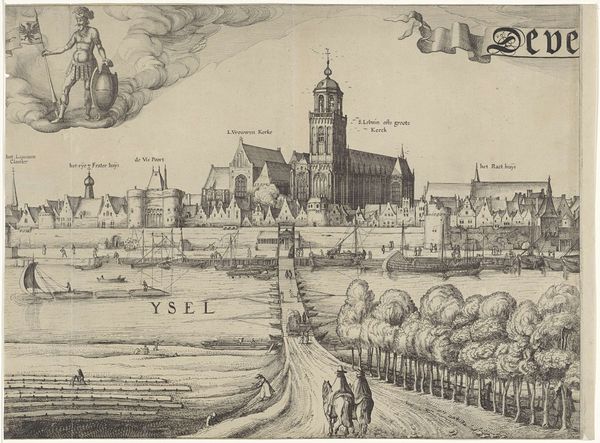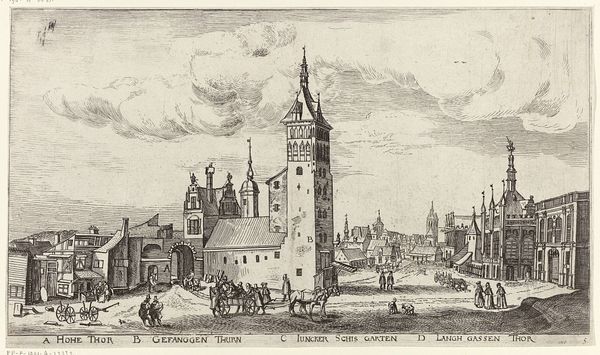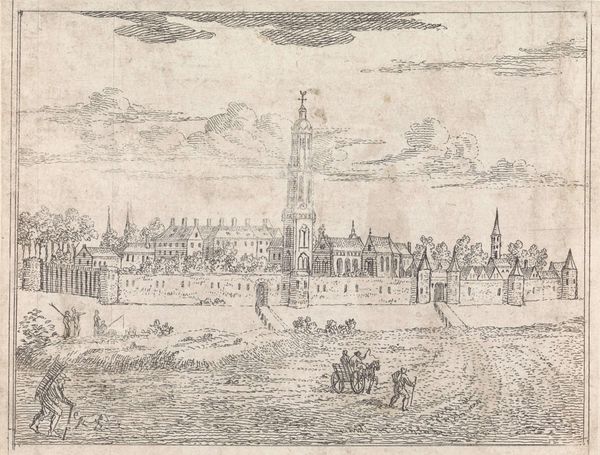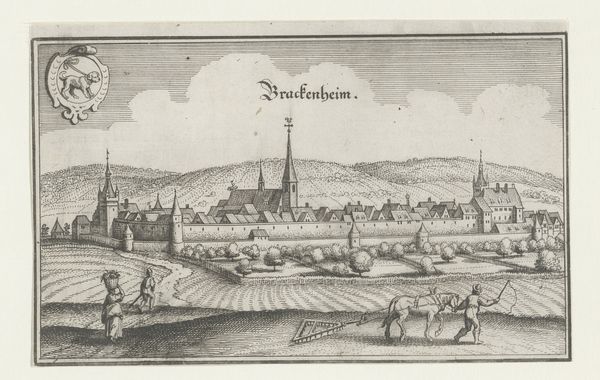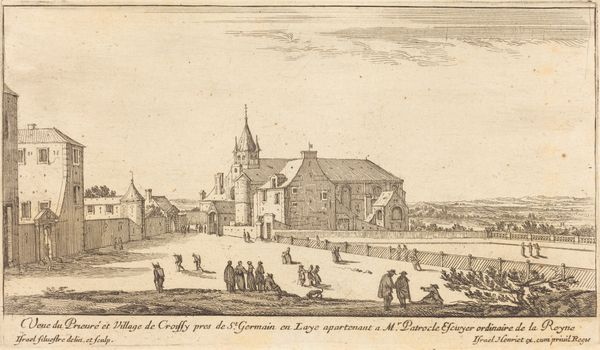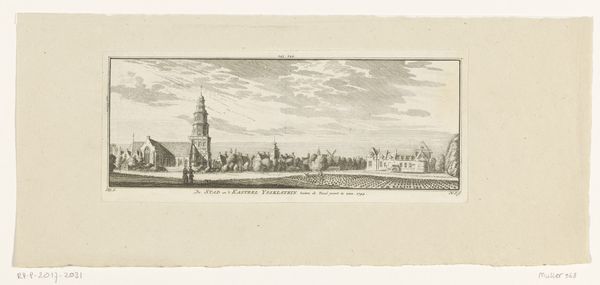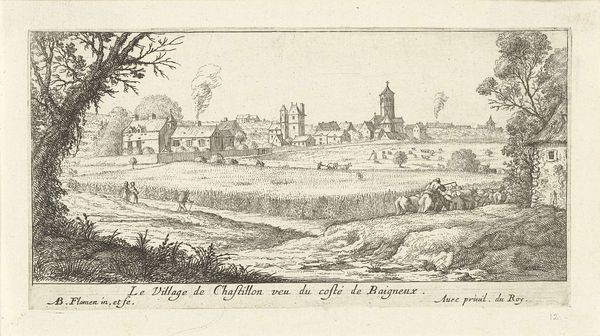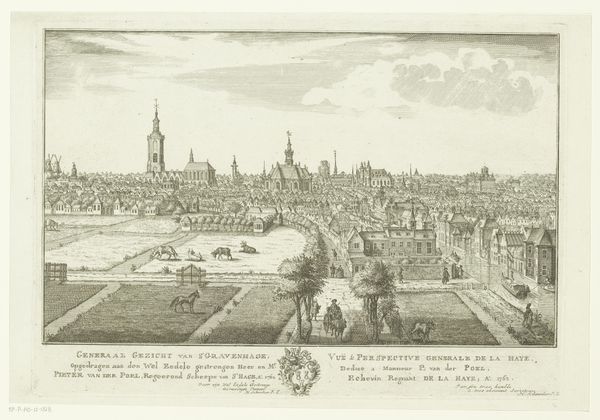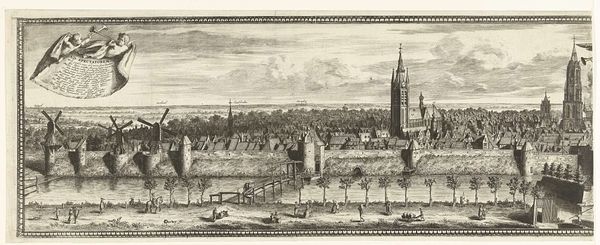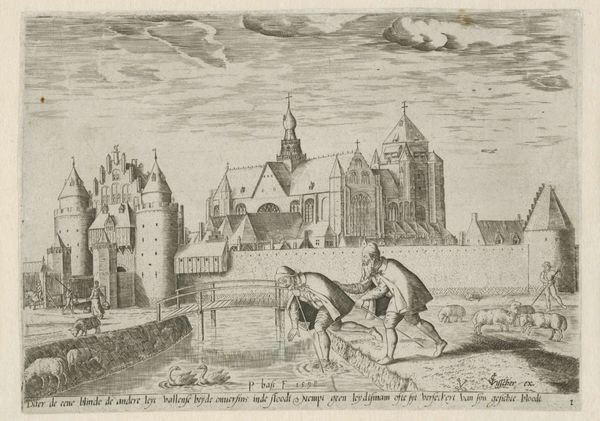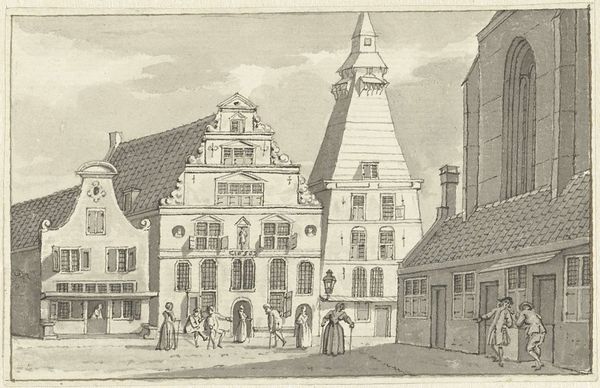
print, engraving
#
baroque
# print
#
landscape
#
line
#
cityscape
#
engraving
Dimensions: height 75 mm, width 175 mm
Copyright: Rijks Museum: Open Domain
Editor: We're looking at "Gezicht op Dornstetten," a cityscape etching by Matthäus Merian, created sometime between 1643 and 1690. I find the precise linework and almost bird's-eye perspective really fascinating. How do you interpret this work through a formalist lens? Curator: Indeed. Focusing on its formal elements, the linear precision is paramount. The work's value resides within the intricate, almost architectonic rendition of form. Note the consistent application of hatching and cross-hatching, primarily delineating form. Observe how the interplay of these graphic elements dictates space and creates value. How do you think the linear quality affects our experience of the city itself? Editor: I think that it lends a feeling of order and perhaps control, which is very different than my sense of contemporary cities as always evolving and somewhat chaotic. Curator: Precisely. The engraving medium facilitates exacting replication, allowing Merian to orchestrate visual space with calculated articulation. Consider the balance of light and shadow, achieved solely through line variation and density. Is this not itself an argument for the print's intrinsic worth, divorced from mere representation? Editor: Yes, definitely. The emphasis really does come across as the construction of the image, the technique of line itself. I guess I initially jumped to seeing it only as a historical document. Curator: A common impulse. Yet the visual vocabulary itself elevates the print, compelling appreciation beyond mere contextual data. Close scrutiny validates the formalism, inviting discourse on technique and intention. We must consider how the internal structure functions. Do you see how that enhances our insight into Merian’s choices as a visual artisan? Editor: I do. Considering the linework as the primary expressive element makes the image more compelling. Thanks for helping me notice these structural aspects. Curator: My pleasure. Seeing in this way allows one to develop new understandings of visual art in its time, and our own.
Comments
No comments
Be the first to comment and join the conversation on the ultimate creative platform.
